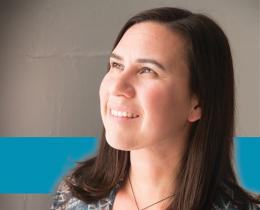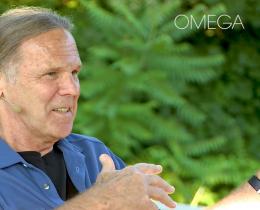Rob: What originally motivated you to do this work? Has that motivation changed over time?
Jennifer: My initial motivation came from a sense of gratitude for how yoga helped me during some of the most challenging times in my own life, combined with a desire to be useful. Now, sharing yoga is something that draws me closer to other people in a nourishing and personally enriching way. Much of my current motivation is about connection and relationship. Yoga is the framework for sharing a way of living in the world. When I'm fully immersed in this work, I feel like I'm the best version of myself, and my heart is most open. That's a really nice space to live in.
Rob: How is yoga effective in improving attention and emotional balance in children?
Jennifer: Often these two challenges are addressed with different approaches, but we know that the capacity to pay attention is directly tied to emotional balance. Kids have to feel good to access the part of themselves that is capable of focus and good decision-making. Yoga improves both of these in a way that is fundamentally appealing to children—through their bodies and through direct experience
In my work, I emphasize skill building rather then diagnosis and treatment. Kids are freed from the self-doubt that often comes with labeling, while still getting the support they need. Yoga is low-cost, requires little equipment, and has only healthy side effects. Because yoga is a lifelong skill, rather than an intervention, children can build resilience before challenges occur.
Rob: What should educators, and parents, know about yoga and mindfulness practices?
Jennifer: The most important thing they can offer children is their own mindfully aware attention. A lot of what kids need in order to pay attention is to feel seen, accepted, and loved. A personal practice can make us more capable of offering this, even if we aren't teaching yoga to kids directly.
That said, sharing yoga with children doesn't have to be intimidating. I always encourage personal practice, but don't want adults to feel like they have to be an expert in order to share yoga with kids.
Rob: Is there an evidence base for your program in particular?
Jennifer: In developing the program, we relied on existing research about how children develop, learn, grow, and heal. Currently, we're working with a researcher who is evaluating our curriculum and implementation based on data collected from 24 schools and 21 teachers over 18 months. Preliminary results have been positive and we are looking forward to his full report. It's surprising how much an outside perspective can change even the questions you are asking yourself.
Rob: What is the greatest challenge you face in bringing therapeutic yoga to children and families?
Jennifer: Five years ago, I might have said it was overcoming institutional skepticism in schools and among parents, but this has changed tremendously. Now, from the perspective of my role at Little Flower Yoga, our toughest barrier is finding enough great teachers. Schools want the programming, but this is hard work. It requires training, practice, preparation, reflection, and a wide variety of skills that aren't always easy to find in one person.
Another major challenge is finding ways to help kids integrate the practices into their lives. It's really important that adults support and reinforce the work. Getting parents and teachers invested in the work, familiar with strategies that make behavior management more compassionate and respectful, and ultimately involved enough to remind the child of tools he has learned during difficult moments, is the ultimate goal.







